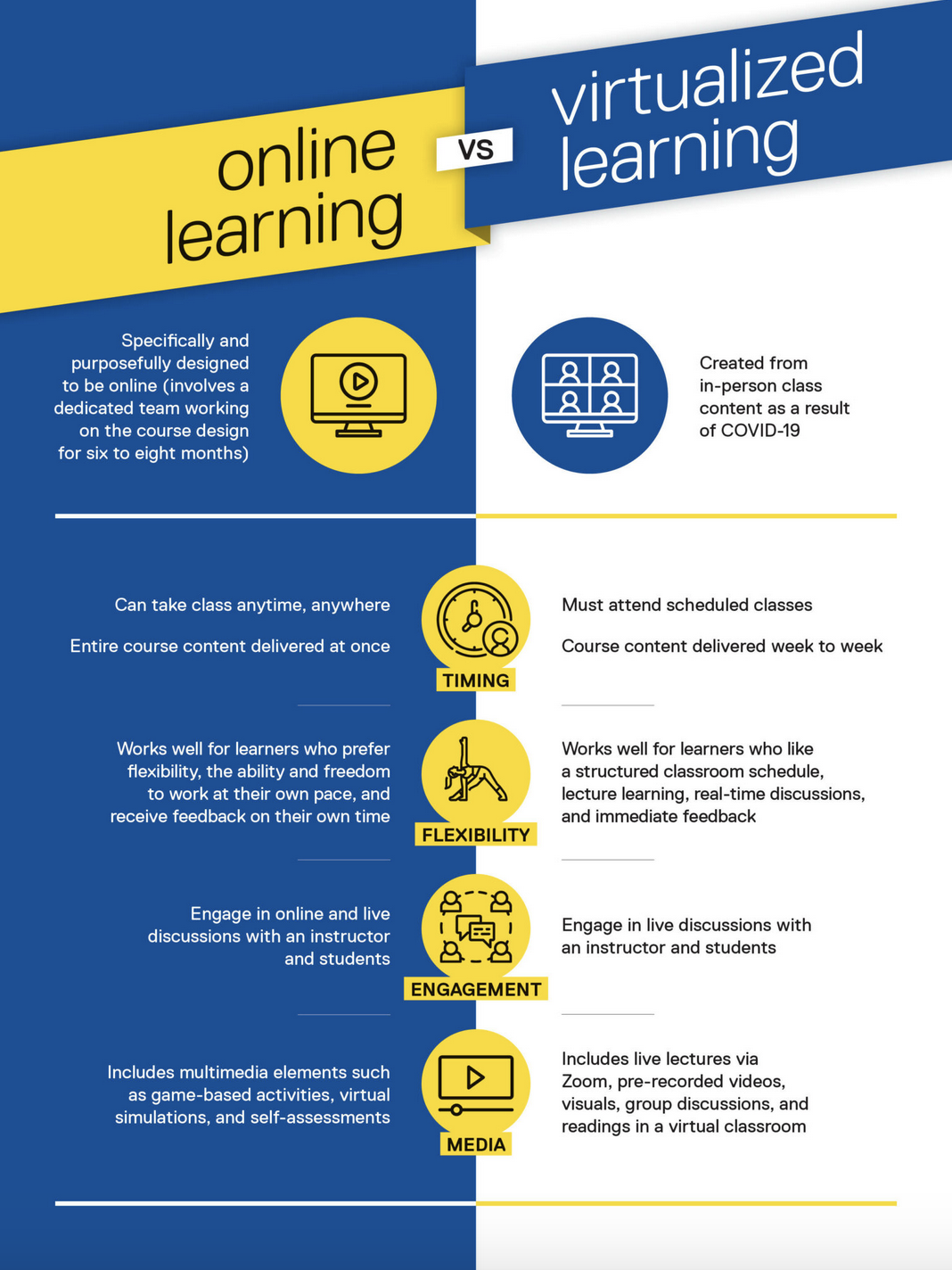
The Chang School (2021) What’s the difference between Online and Virtualized Learning? Toronto: Ryerson University, May 28.
In an earlier post, The ‘not normal’ return to normal in September, I noted some significant changes taking place post-Covid in the return to campus – or not. The Chang School of Continuing Education (disclosure: I am a Senior Advisor) at Ryerson University, Toronto, is taking the dramatic step of offering either synchronised virtualized courses, or asynchronous online courses. It will NOT be offering any on-campus courses in September.
The reason: prior to Covid-19, the Chang school offered a large selection of fully designed, asynchronous online courses. However, each course takes several months to develop, and requires strong input from instructional and web designers. With Covid-19, the Chang School, as did all other institutions, had to rapidly move its face-to-face courses to emergency remote learning. Also, like other institutions, it used synchronous video-conferencing for this purpose. Even for September, 2021, there was clearly not enough time to convert all its synchronous courses into fully designed, online asynchronous courses. Over time, many of the virtualized courses are likely to be converted to online courses, but this will take time.
So their choice was either to revert to face-to-face courses, with Covid-19 still around, and a lack of clarity about the necessary health precautions that will be needed in September, or be bold and offer all its former face-to-face classes as virtualized courses.
Given that the Chang School is focused primarily on lifelong learners who are working, the difficulty for many lifelong learners of getting into central Toronto (where its campus is), its intent to widen its catchment beyond downtown Toronto to the rest of Ontario and beyond, and surveys of its students indicating most are happy with distance education, the strategic decision makes a lot of sense.
But this requires a communication strategy that clearly explains the difference between virtualized and online courses. This is what the blog post and infographic sets out to do. In particular, ‘virtualized courses closely resemble classroom learning, and they offer live video instruction, in-class discussions, and set schedules in a synchronous – or real-time – environment.’
Of course, there remains a number of issues. Online learning courses have developed a set of best practices that assure quality in online learning. How does one ensure quality though in virtualized courses? Well, many of the best practices that apply to asynchronous courses – such as managing student and instructor workload, the need for regular feedback, and building a sense of community – will also apply to virtualized courses. Also there are well-established – if little known – best practices applied to synchronous lecturing, such as the University of Waterloo’s Lecturing Effectively that can be adapted for virtualized learning.
What I expect to see though is a blurring between the synchronous and synchronous distinctions, as students clearly prefer recorded lectures to having to be at specific time and place, and as online courses integrate more synchronous teaching opportunities.
In the meantime, the Chang School provides a unique opportunity to compare and contrast the two approaches to distance delivery.









 Dr. Tony Bates is the author of eleven books in the field of online learning and distance education. He has provided consulting services specializing in training in the planning and management of online learning and distance education, working with over 40 organizations in 25 countries. Tony is a Research Associate with Contact North | Contact Nord, Ontario’s Distance Education & Training Network.
Dr. Tony Bates is the author of eleven books in the field of online learning and distance education. He has provided consulting services specializing in training in the planning and management of online learning and distance education, working with over 40 organizations in 25 countries. Tony is a Research Associate with Contact North | Contact Nord, Ontario’s Distance Education & Training Network.

